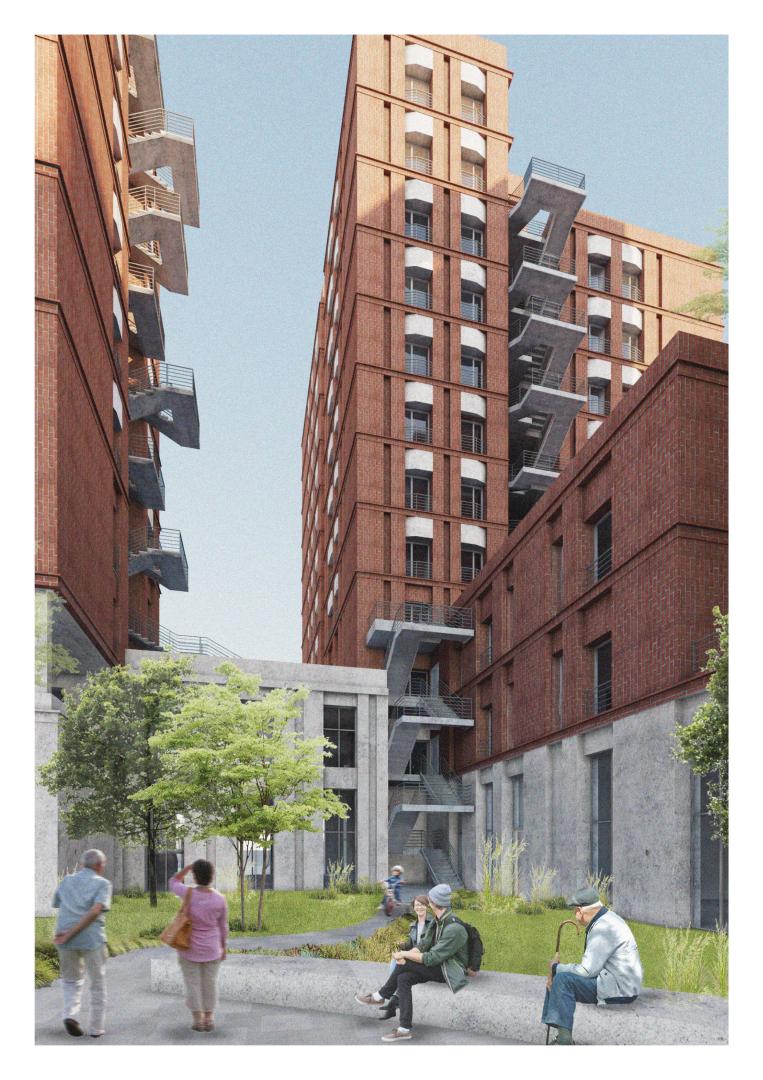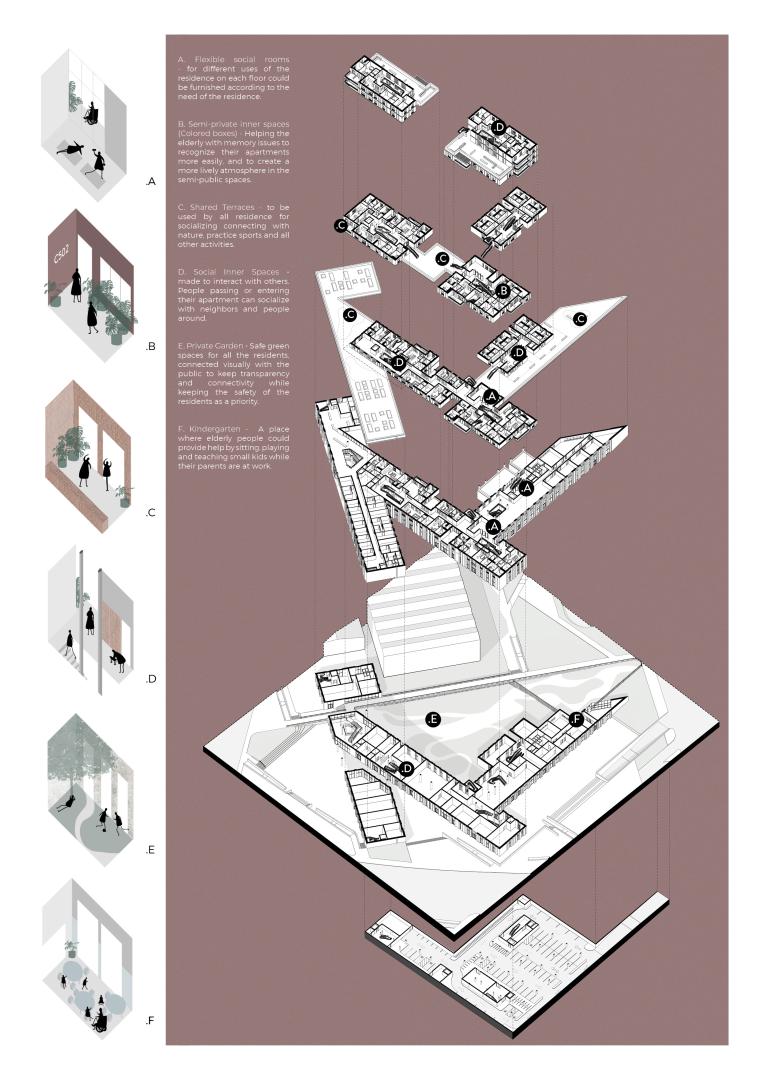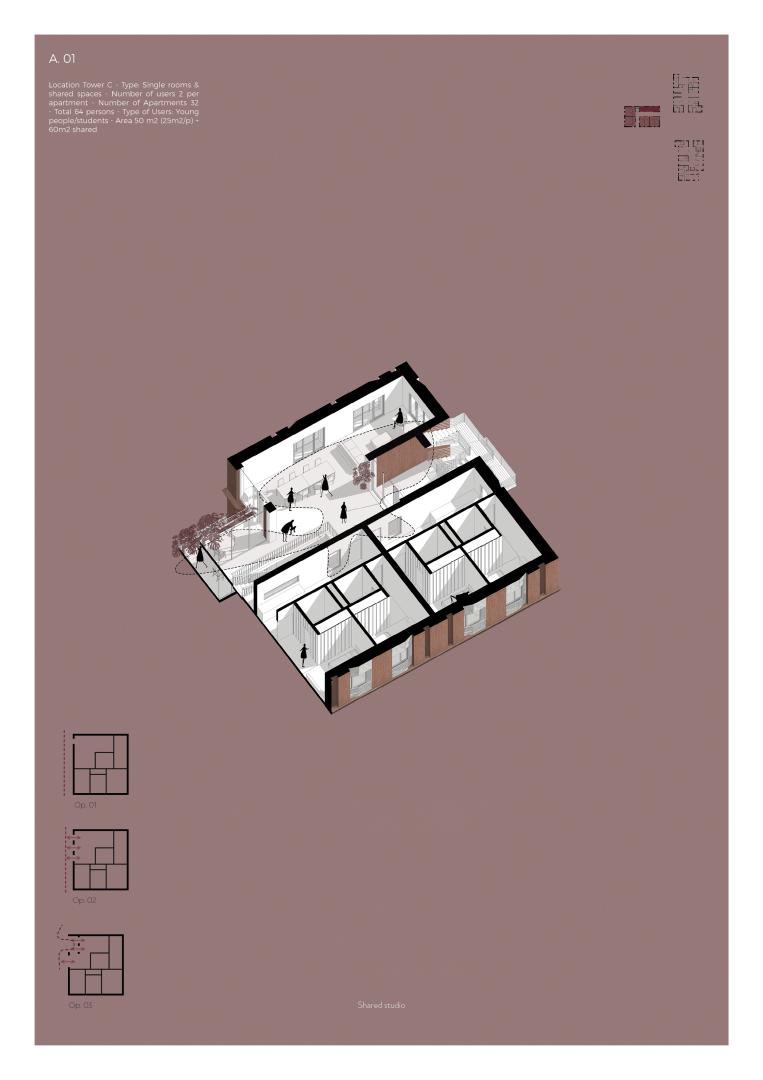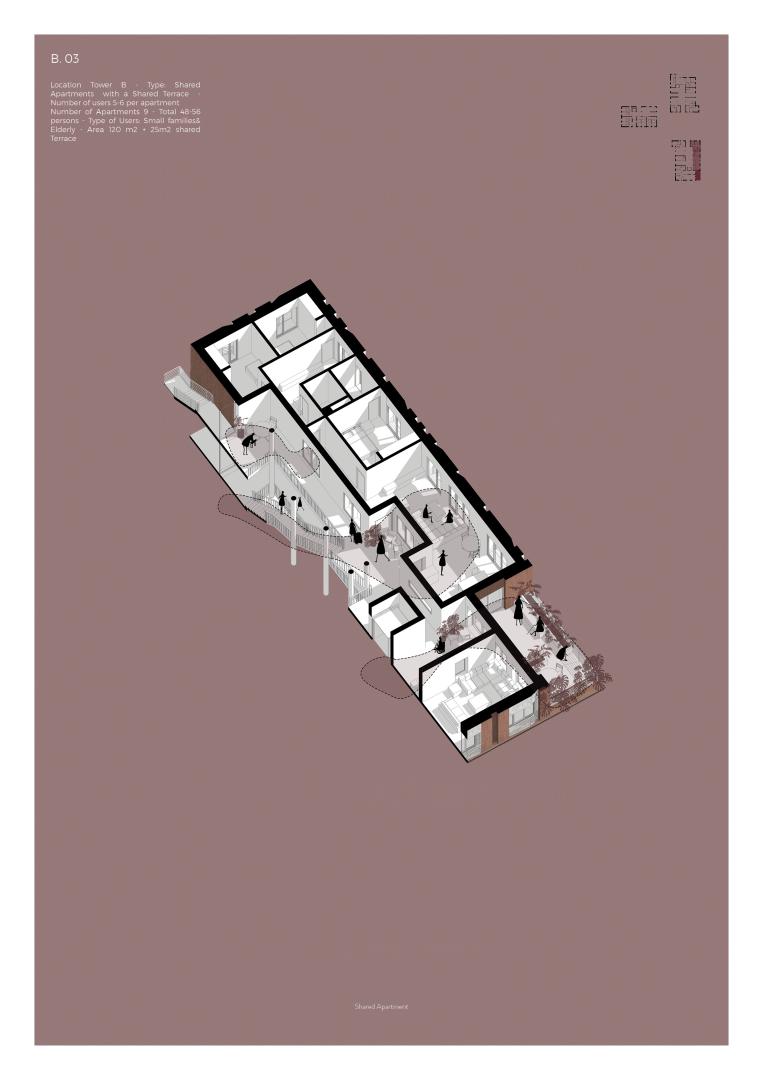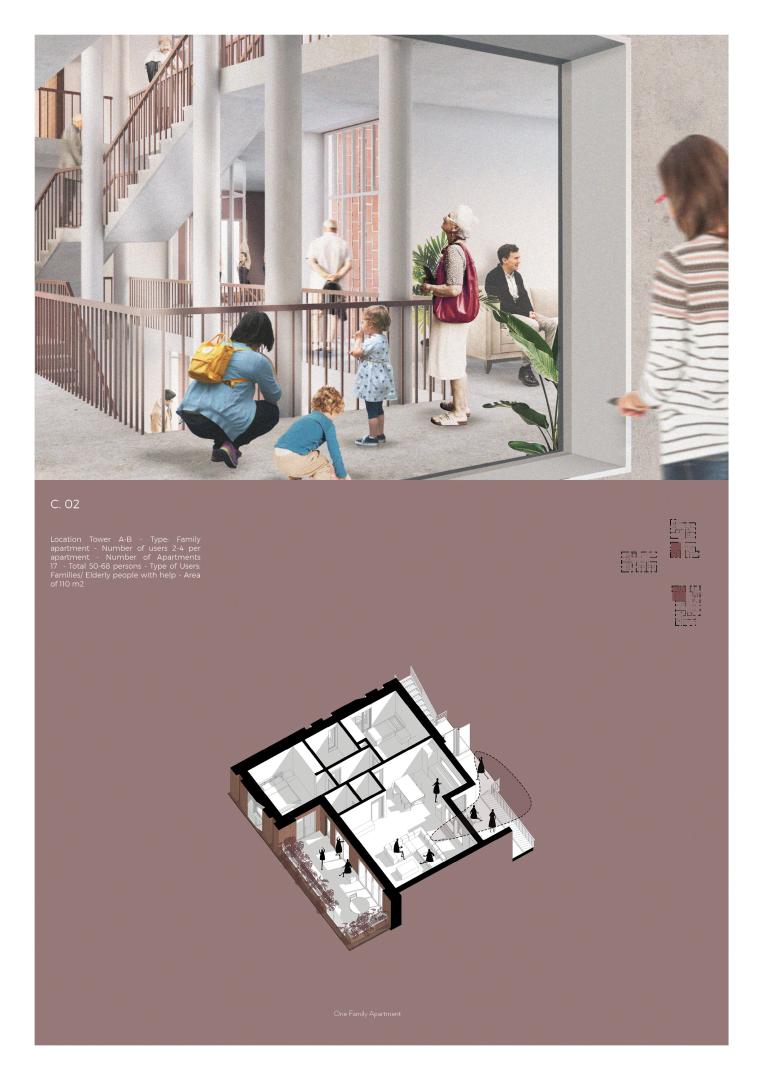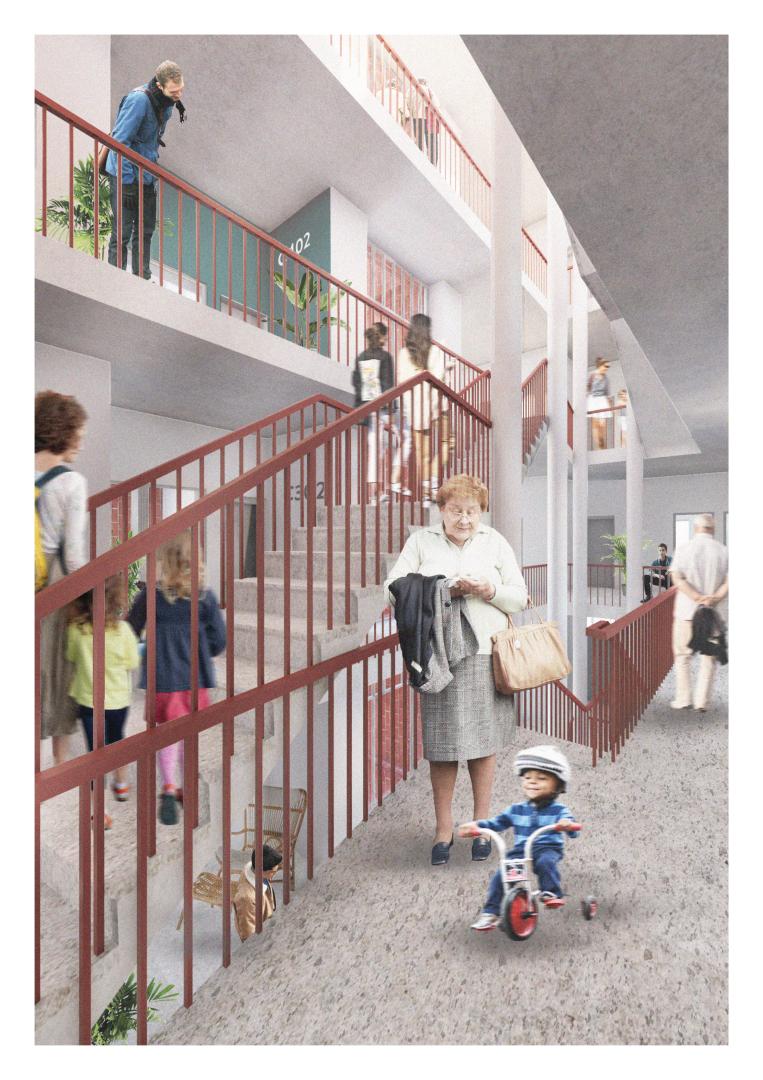A Space for Life
Basic information
Project Title
Full project title
Category
Project Description
The most important aspect in designing quality, age-friendly spaces is not only designing good quality housing but also quality spaces. People of age lose their physical and mental strength; some need permanent help for everyday activities. Therefore, availability, affordability, accessibility of all services around can impact our ability to use, access, and interact particularly in older age. So we provide living spaces where you could adjust according to your needs and share it with others.
Geographical Scope
Project Region
Urban or rural issues
Physical or other transformations
EU Programme or fund
Which funds
Description of the project
Summary
We are tackling a demographic problem through architecture by creating inclusive and friendly spaces for fragile people: babies and little children, people of different ages with impairments (permanent or not), temporary constraints, focusing on older people (the only age group that is consistently growing in Europe). Gallaratese, in Milan, was the chosen location for the project with the aim of revitalizing the area by attracting different generations of residents and workers to this new set of hybrid buildings.
A new urban centrality is created through a ground floor podium (commerce, offices, public facilities) connecting the surrounding urban spaces by different architectural devices: pedestrian bridge, shared street, sunken courtyards. In Covid-19 times, the project offers spacious roof terraces for residents to do sports and have safe social interaction. Providing generous balconies in the apartments (and windows open to the corridors), for residents to enjoy everyday life and visually interact was one strategy, the other being the design of inner spaces connected to common spaces on each floor to promote soft physical activity. And lastly, the big diversity of apartment types welcomes different users.
Key objectives for sustainability
The sustainability idea in the project was abbreviated in providing a whole natural system in a building. After the Pandemic that occurred in the current year, we realized the importance of balconies, gardens, open spaces in a building or even huge windows facing a park. We realized that we are building machines that would provide us with the services we need, but not creating spaces to live in, to interact with them and to gain from them.
The restrictions that held us inside our houses for so long let us understand how sick people, or older people that cannot leave their homes feel. Therefore, connection to nature would be by enlarging windows to allow people to engage with the outside from their beds (if they are not able to leave), or just by creating more oversized balconies and planting more vegetation. It is crucial to stress the necessity of connection to nature in designing and building. It is peoples interaction with nature that is important, and that would sometimes help with isolation where people could take care of their plants, interact with them and feel the joy growing them.
We focused on public, private and shared green spaces to provide opportunities for relaxation, socializing and connecting with the natural world. It is crucial to provide high-quality green spaces throughout the city, to empower neighbourhoods organizations but it is more important to provide that in our houses. That was the main idea of our shared big balconies for everyone to benefit from this, physically and mentally, and nature too where trees and other plants would grow naturally and attract beneficial wildlife too.
Key objectives for aesthetics and quality
The most important aspect in designing quality, age-friendly spaces is not only designing good quality housing but also quality spaces. People of age lose their physical and mental strength; some need permanent help for everyday activities.
Therefore, availability, affordability, accessibility of all services around can impact our ability to use, access, and interact particularly in older age. Older people have the right to have active and fulfilled lives. That is why we created more open spaces where the elderly can walk freely inside and outside to encourage them to move and interact and even participate and work (looking after kids or providing help in the Nursery and kindergarten or other physical activities such as planting). Along with creating bigger shared spaces and bigger terraces inside the complex. During the lockdown due to the current pandemic, we realized how much we need the connection with others and with nature. Providing more openings, bigger Terraces, bigger spaces help everyone to socialize while keeping safe not only the elderly. On the other hand, we realized, how much is important to have extra spaces to work, play, practice sport and not only for sleep.
Therefore we worked to provide all that and to make the life of the elderly specifically more healthy, safe, more social and most important independent if possible.
Key objectives for inclusion
“Autonomy is fundamental for older people’s dignity, freedom and independence. A person’s ability to move is often hindered by the ageing process and therefore having all the functions needed within a walkable distance from home starts to be relevant.” (S. Recalcati, 2020) Cities around the world are implementing the strategies and plans provided by the WHO and UN, to provide high-quality spaces and above all to provide high-quality life. The elderly would not feel isolated and they could feel as they are living with a big family. They could get help ( groceries, cleaning ... etc) and provide also help for other residents ( Cooking, Babysitting, teaching ... etc). For security and health, all Residents should be equipped in a good way to provide a safe environment for all not only the elderly, and there is also a chance for an elderly person to live with help if needed (chronicle illness).
As we grow older our families go apart, and usually as a part of the life cycle children eventually move from home to live with their own family. Therefore, a lot of elderly people are living alone due to the work or study of their children or grandchildren. Living alone for elderly people could be challenging if we did not provide a safe environment inside and outside their homes. Providing a new concept for housing that would provide more connection to others while keeping safe, accessible, good quality and healthy environment will help seniors live independently but also will encourage them to socialize with others and at the same time help and participate in the community living in.
Physical or other transformations
Innovative character
All the ideas combined let us provide the strategy to improve the quality of spaces and to provide what is needed for all residents, mostly the elderly and the ones with needs.
Many Seniors have spent years in their communities and neighbourhoods. Their experiences are an essential source for taking decisions, planning and managing communities. Giving residents not only older people the ability to participate in planning can help in boosting their sense of belonging to the community. This step also helps in promoting feelings of investment and encouraging future involvement. We did not want to move the older people or the young ones. We wanted to keep them inside their community make them build it, provide their help, and of course get help and be involved and not isolated.
All this was the main purpose of the flexibility of apartments. It was a crucial aspect of designing an apartment for life and designing housing that would allow people to stay in their houses throughout their life. Young people would only need a single or double room, but growing older and starting a family they would need to move to a bigger place. However, having the opportunity to live in a flexible space where you could add rooms or share a space with others would let families grow in the same house, having reduced rent; this is popular among younger people where they prefer smaller areas or even living with others.
We provided apartments where you could adjust the size according to its users and share it, keeping your privacy.

